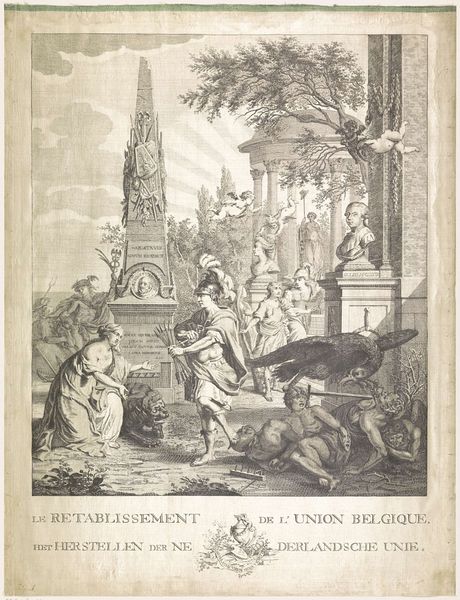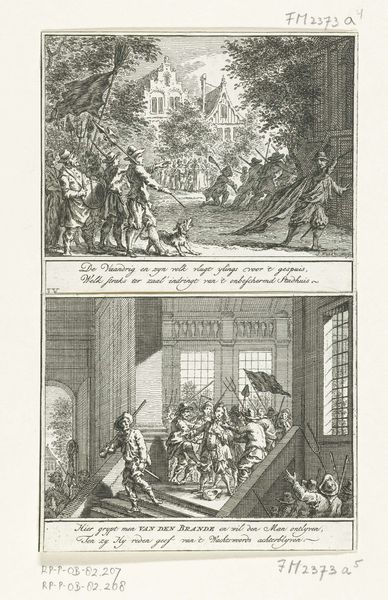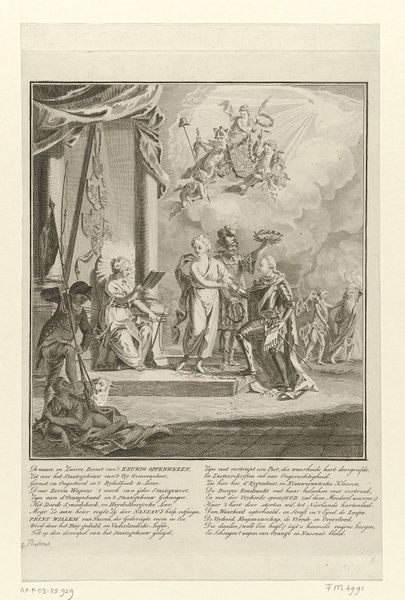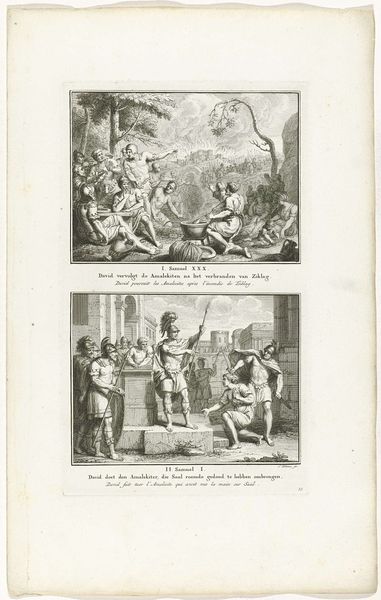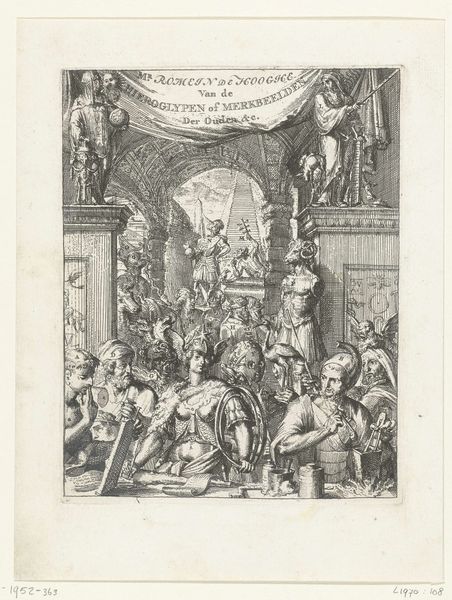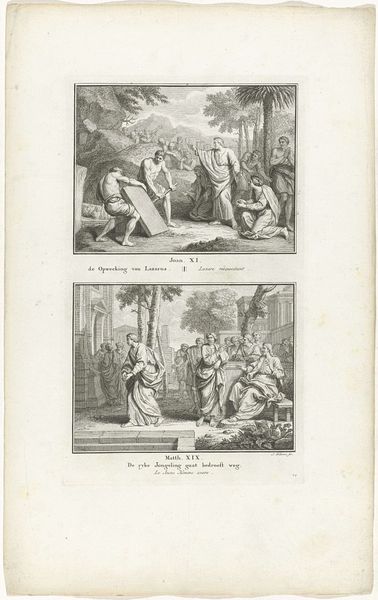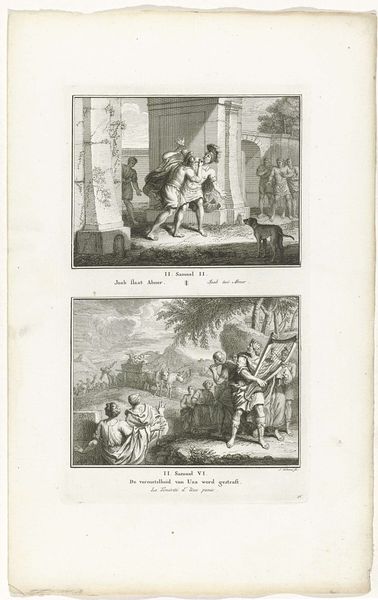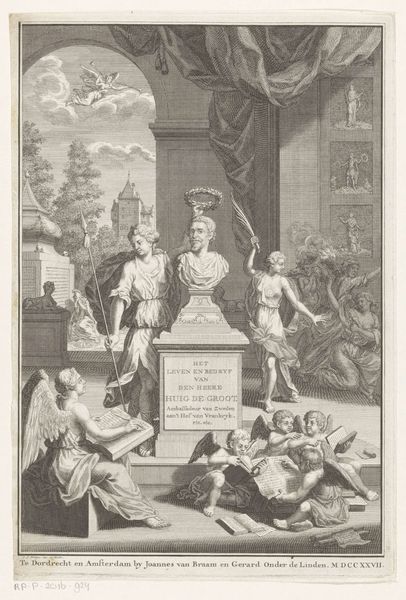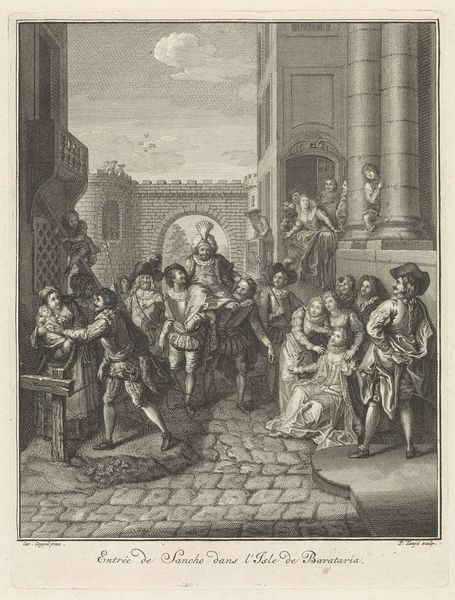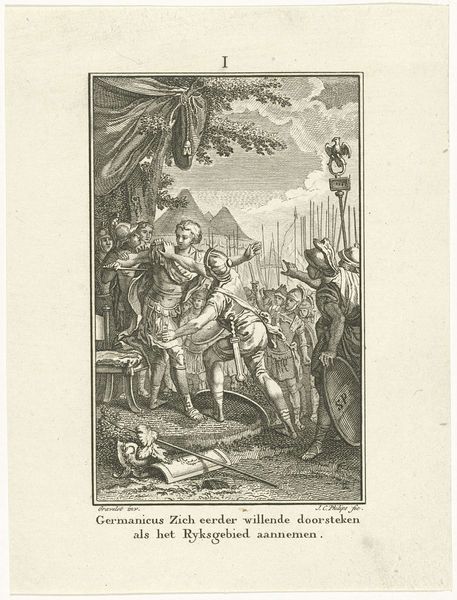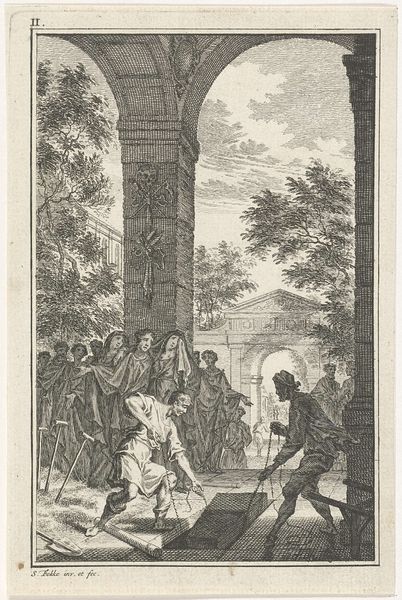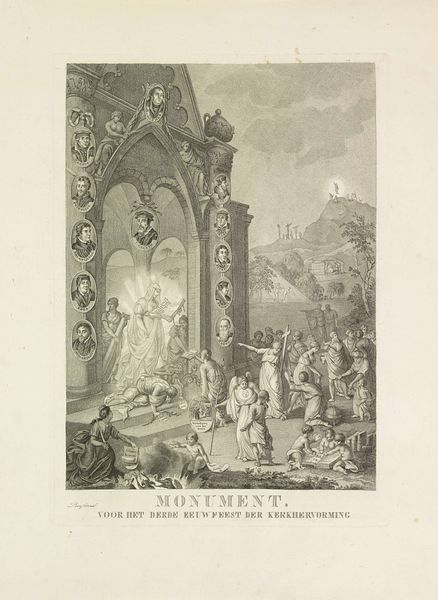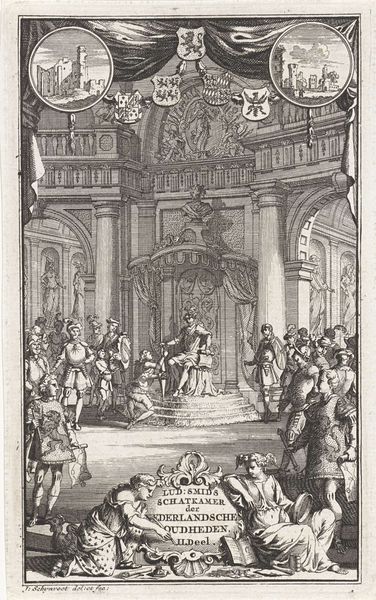
Dimensions: height 540 mm, width 405 mm
Copyright: Rijks Museum: Open Domain
Curator: Oh, my, what a flurry of activity! At first glance, I see so much drama and tension, but then there are little cherubic figures floating around, adding a bizarre lightness to the scene. Editor: Indeed. This engraving, from 1787, is titled "Allegory on the Restoration of Unity in the Netherlands." The piece presents, in rather baroque detail, a complex commentary on Dutch politics of the time. It's an anonymous work housed here at the Rijksmuseum. Curator: Well, mystery artist or not, the fellow sure laid it on thick with symbols. That woman slumped near the altar seems distraught. What's with the bundle of sticks clutched by the fellow marching along like a Roman general? It all feels staged and overly symbolic. Editor: The woman, most likely, represents the Dutch Republic in a state of disarray. And the bundle of sticks signifies unity, strength in numbers if you will—a common motif of the era suggesting a return to concord after a period of strife. Curator: Aha, now I’m tracking! The broken chains at the feet of the characters wrestling with the shadowy bird must represent breaking free from some oppressor or discord, right? It's a rather heavy-handed way of declaring "everything's fine now," don't you think? Editor: Exactly. But context matters. This engraving emerges during a volatile period, marked by internal political struggles and external pressures from European powers. It's propagandistic in nature, designed to inspire confidence and reinforce the idea of a unified Dutch identity. So this image functioned as an ideological tool. Curator: But doesn't that feel like a simplification? It's like trying to glue Humpty Dumpty back together with…well, more glue and a Roman costume! Can you ever really recover from division by simply declaring unity? It feels fragile somehow. Editor: Precisely. And this fragility reflects the actual political landscape of the time. It highlights the tensions between the desire for centralized authority and the longing for regional autonomy—forces constantly pulling against one another in Dutch history. Curator: A visual wish then, rather than a photograph of reality? Something about this image makes the dream of unity palpable—even, dare I say it, almost heartbreaking, given its ultimate fate. Editor: In that sense, it encapsulates a specific moment, an idealized yet unstable vision of Dutch identity. It prompts us to ask: who is this unity really for, and at what cost? A question that resonates across centuries.
Comments
No comments
Be the first to comment and join the conversation on the ultimate creative platform.
